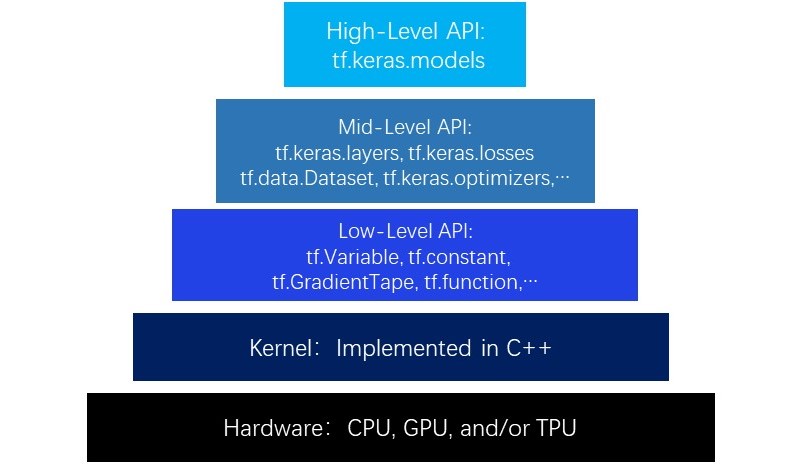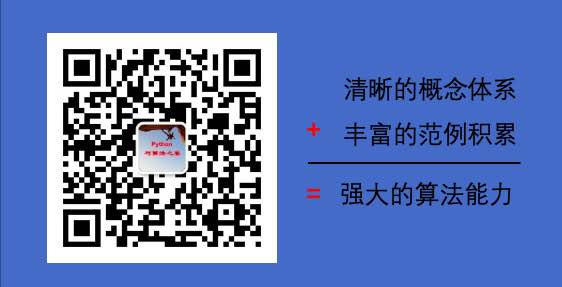Chapter 3: Hierarchy of TensorFlow#
We are going to introduce five levels of TensorFlow in this chapter: Hardware Level, Kernel Level, Low-level API, Mid-level API, High-level API. We demonstrate the differences in model implementation at different API levels with two examples: a linear regression model and a DNN binary classification model.
From lower to higher, there are five levels in TensorFlow hierarchy.
The bottom one is hardware level. TensorFlow supports adding CPU, GPU or TPU to the resource pool of computing.
The second level is the kernel implementing C++. These kernels are able to run on distributed cross platforms.
The third level contains operators in written in Python, which provides low-level API instructions that packaging C++ kernels, including tensor operation, graph, automatic differentiate, etc.
For example: tf.Variable, tf.constant, tf.function, tf.GradientTape, tf.nn.softmax...
If we compare a model to a house, then these third level APIs are the bricks.
The fourth level contains model components implemented in Python. They provide packaging to the low-level API functions, including model layers, loss functions, optimizers, data pipelines, feature columns, etc.
For example: tf.keras.layers, tf.keras.losses, tf.keras.metrics, tf.keras.optimizers, tf.data.DataSet, tf.feature_column...
If we compare a model to a house, then these fourth level APIs are the walls.
The fifth level contains well-designed models implemented in Python. Most of them are high-level APIs packaged by OOP, typically are the class interfaces for tf.keras.models.
If we compare a model to a house, then these fifth level APIs are the houses themselves.

Please leave comments in the WeChat official account "Python与算法之美" (Elegance of Python and Algorithms) if you want to communicate with the author about the content. The author will try best to reply given the limited time available.
You are also welcomed to reply 加群(join group) in the WeChat official account to join the group chat with the other readers.
